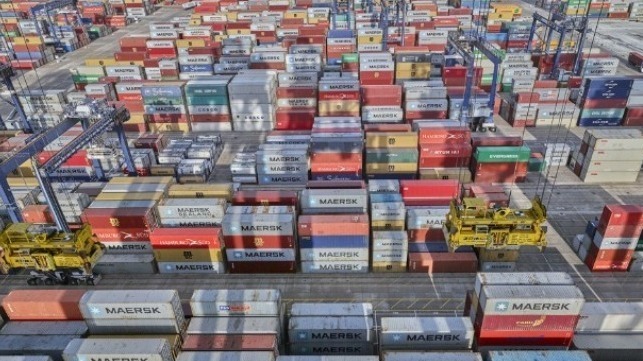Xeneta: Freight Rates Have Nearly Doubled with No Relief Near

Long-term ocean freight rates have nearly doubled from a year ago and are continuing their steady rise. In a new analysis of the market, Xeneta, an ocean and air freight rate benchmarking and market intelligence platform, reports there is little evidence to suggest a weakening of market fundamentals in the near term.
“This year has seen a unique convergence of COVID-19 disruption, port congestion, strong demand, and maxed-out capacity, and that has stoked the flames of record-breaking rates,” explains Xeneta CEO Patrik Berglund. “The global supply chain is under immense pressure and desperate shippers have no choice but to pay up to secure deliveries, or at least try to, ahead of key trading periods such as Christmas. It’s a crazy market out there.”
Xeneta’s Long-Term XSI Public Indices reported yet another monthly hike in long-term ocean freight rates, with global container prices climbing by 3.2 percent in September. This follows a 2.2 percent increase in August, and an unprecedented 28 percent jump in July. Year-over-year, rates are now up 91.5 percent overall with some markets showing even larger increases.
Despite the dramatic cost increases, Xeneta sees little indication of a near-term reversal in the market. Carriers’ capacity will remain constrained in the near term while Xeneta expects seven to eight percent growth in global container volume is anticipated. With the large additions in capacity from the newbuild orders still years away, Berglund says that field carriers are aiming to secure elevated rates by locking customers into more long-term contracts (now 60% of Maersk’s bookings) and hedge future revenue. Some leading players are even offering multi-year deals, with the benefits of additional volume options, or stable, guaranteed shipments.
Data from Xeneta’s XSI highlights the continuing pressure in individual markets. In Europe imports on the XSI rose by 3.9 percent in September, meaning the benchmark has appreciated 132.5 percent year-on-year. Exports also increased, edging up by 1.3 percent, now 51.7 percent higher than this time last year.
Xeneta’s data, however, showed that in the US imports rose by just 0.6 percent, although strong recent growth leaves the benchmark 67.3 percent up year-on-year. Exports grew by the same margin, with the index now up 20.7 percent against last year.
In the Far East imports fell for the first time since March, but only by 0.7 percent. This still leaves the index 49.8 percent up year-on-year. Exports continued to power along in the right direction, with rates showing a 5.1 percent increase, up 126.8 percent against September 2020.
“This year we’ve seen the emergence of larger retailers chartering their own vessels to ensure both reliability in the supply chain and a degree of cost control,” Berglund says. “September saw yet another major shipper resort to what some see as a drastic measure, with the John Lewis Partnership partnering with an as yet unnamed freight forwarder to take on its own ships. This is a direct response to a market in overdrive, but one wonders if this type of approach could signify a new way of working, in the long-term, for shippers sick of being held to ransom.”
Despite shippers’ efforts at improving the situation, Berglund forecasts that in the near term little will change. He points to the port congestion around the world and the rush to move merchandise for the end of calendar year holidays while spot rates remain high. With no relief in sight, Berglund concludes, “One thing is certain though; something has to be done. Current carrier profitability levels are not sustainable, nor are they in the carriers' long-term interests. With such high profits, the seed is sown for challenges to the status quo, with new industry entrants or more direct cargo owner action, such as chartering. The carriers simply don’t want that.”
